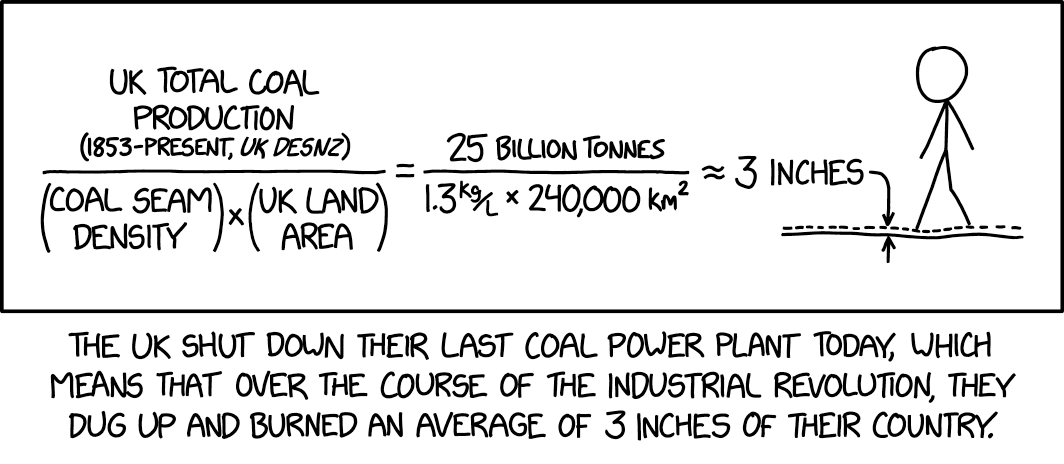The Watership Down rabbits removed an additional 0.1 nanometers constructing their warren, although that was mostly soil. British rabbits have historically mined very little coal; the sole rabbit-run coal plant was shut down in the 1990s.
One could say that they placed 3 inches of the same area as UK elsewhere.
It’d be nice if they cleaned that shit up.
Placed 3 inches of their land in the air
Except that the UK taxed all its locally produced coal so much that it was cheaper to import more dirty coal from China than use fresh, relatively clean coal excavated from Wales. If a power station wanted to use Chinese coal, they only had to pay import duty. But if they wanted to use cleaner Welsh coal they had to pay taxes on the extraction, refinement and then the same export tax they levied everywhere else. Welsh coal was some of the highest quality in the world, but it was exported and more toxic stuff burned locally because that was more profitable.
And then fitted flue gas desulphurisation equipment to clean up the emissions to burn the cheap brown coal that had the higher sulphur content, to make the emissions equivalent to the expensive Welsh stuff.
It’s quite relevant if you consider that coal mining is concentrated to a much smaller area really. Besides the destroyed habitat, the pollution, the dangers of sinkholes and the cost of renaturation you also have to contend with rain and ground water constantly filling in the mining pits.
Don’t know about the UK but in West Germany’s Rhein-Ruhr area, a former coal mining hotspot, the energy used to operate the pumps that keep the water out will eventually be greater than the energy gained from burning all the coal. Can’t find a source on the quick but I think it might have happened already. Of course it’s not a simple subtraction as all that energy was used to generate more infrastructure and capital that can now pay for the pumps. According to this German source their operation costs around 300 million euros yearly which gives you a rough idea of just how expensive that is.
We still have a lot of slag heaps in the top of some of our local hills. They make for some interesting mountain bike runs but they aren’t exactly diverse in floor coverage. Some pits are now tourist attractions but I don’t know what ongoing work is done to maintain the abandoned ones.
Lützi Lebt!
Islay Scotland has burned a shitton of peat over the last couple of centuries to make malt whisky and it’s very small. Wonder how much if their elevation they’ve burned?
While peat regenerates, it does so slowly, so they might actually have burned off some measurable elevation (on average)
“the sole rabbit run coal operation was shut down in the '90s” LoL
I remember the protests when they tried for redundancy at the Grimsley Warrens.
A very bloody week indeed.


